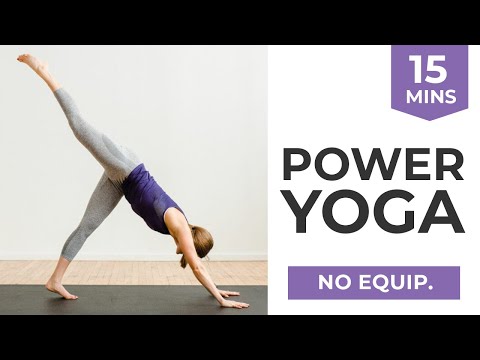
The shins downward pose is an important position for lowering blood sugar. This yoga pose involves lifting the pelvis and spinal column to create a bridge-like position. The legs are then lowered towards the ground. The end result is a relaxed and peaceful body. This yoga pose reduces stress and anxiety. It has many other health benefits. It increases blood flow to brain. It also regulates heart rate and controls high blood pressure.
Another benefit of practicing yoga for blood pressure is that it improves your cardiovascular health. People who don't know how to relax can cause their blood pressure to skyrocket, and it's important to learn how to do so. Savasana (the last position in yoga) is designed to bring peace and relaxation. This can reduce stress and elevate the heart rate. The more you practice yoga, the more you'll benefit.

A great way to lower blood pressure is the child pose. This pose reduces stress and improves circulation. It's also easy to do, and you don't need special equipment. The child pose is typically performed on a full stomach, so it's important to practice carefully. Be sure to pay attention to your breathing while performing each posture. Each set should consist of three sets. Hold each one for at least 30 seconds and repeat 3 times.
You can do many yoga poses to lower your blood pressure. These poses are great for hypertension and calm the mind. They can help you control your hypertension by relaxing your muscles and calming the mind. Even yogic exercises can be used to lower blood pressure. So, start your yoga practice today! These poses can be used every day to improve your health.
The child's position is one of the best poses for high blood pressure. This pose reduces stress and calms the brain. The forward bending position increases blood circulation and lowers blood pressure. While forward bending, make sure your forehead is in contact with the floor. Doing this will help you avoid feeling tired or dizzy. To lower your blood-pressure if you have high blood-pressure, this yoga position is for you.

A typical yoga session includes breathing exercises, meditation, poses and meditation. However, the most important part of a yoga session is the breathing. Regular yoga practice can lower blood pressure by as much as 10 points. It is recommended that high-pressure patients do this at least twice per day, and for at least 15 minutes each. This should be done at least three times per day. Regular yoga practice can help with weight loss.
FAQ
Cardio Exercise: Good or Bad for Your Health?
Cardiovascular exercise is a great way to improve your cardiovascular health. It increases blood circulation, strengthens the heart muscle, boosts stamina, aids in weight loss, and gives you more energy.
Cardiovascular exercise includes running, biking, hiking, swimming, tennis, basketball, soccer, volleyball, football, etc.
It is important to keep in mind that cardio exercises should not only be performed at a high level of intensity, but also at low levels. This could cause injury.
If you feel fine, only do the cardiovascular exercise.
You should never push yourself beyond your limits. This could lead to injury.
Cardiovascular exercise is best done warm-up first. Start slowly increasing your intensity.
Always listen to your body. If you feel pain while performing cardiovascular exercise, it is important to stop immediately.
After a cardiovascular training session, it is recommended that you take some time to relax. This allows your muscles to recuperate.
Cardiovascular exercise can help you lose weight.
This is the best way to lose weight and belly fat.
What is a good seven-day workout routine?
A seven-day exercise program should consist of three days per week of cardiovascular training (running, biking, swimming), two strength exercises (using free weights, weight machines), and one flexibility/core workout (yoga, Pilates). Each activity should be performed at least once each week. The total time for each session should not exceed 45 minutes.
Cardiovascular Exercise: Running/Biking/Swimming
Your goal is to exercise at least 60 minutes each week. To achieve the best results, aim to exercise for at least 75 minutes each week. Cardio exercises can increase blood flow and stimulate the growth of muscles.
Strength Training
Cardio exercises target your heart and lungs. Strengthening your muscles and bones is the opposite. Strength training builds lean muscle mass, which helps burn calories even when resting.
Flexibility & Core Workouts
Core and flexibility exercises are great ways of strengthening your whole body. Yoga and Pilates are both excellent choices.
How many times per week do I need to exercise?
It depends on what type of exercise and how much time are available. A general guideline would be moderate-intensity aerobic exercise 3 - 5 days a week. You shouldn't do too much. It is crucial to exercise regularly in order to reap the full benefits of your workouts.
Which exercises are best suited for me?
It all depends on your fitness goals. Some people focus on endurance activities like running, cycling, and swimming. Some people enjoy lifting weights and using resistance bands. There are many types and styles of exercise available today. Select the one that best suits your needs.
How Metabolic Health is Key to Aging Well
People are living longer lives today than at any point in history. But as they do, they're also getting sicker. Despite making great progress in medical science, it is becoming more apparent that our current approach to medicine is not working.
We need to change how we think about health and aging. Healthy aging is possible only if we look at our metabolic health, not just weight loss, but also overall well-being.
And if you want to live an active life for decades to come, you should ensure that your metabolism stays strong and healthy throughout your entire lifetime.
The good news? There are many things you can do to improve your metabolism. You can improve your metabolic health by incorporating these 7 foods in to your diet.
-
Resveratrol is a component of blueberries that has been proven to improve cellular longevity. They also contain antioxidants and vitamins C & E.
-
Lentils and pinto beans, which are legumes, provide great fiber and plant-based sources of protein. These nutrients help maintain blood sugar levels so they don’t spike and fall.
-
Broccoli contains the antioxidant sulforaphane. This has been shown in studies to protect DNA. It could even slow down the growth of cancer.
-
Chia Seeds are high-in omega-3 fatty acids, fiber, and other nutrients. They're also loaded with antioxidants and protein. All of these nutrients are good for heart health, brain function, gut health, and overall health.
-
Green Tea contains polyphenols called caechins. Green tea's catechins have been linked with reduced bone fractures as well as cardiovascular disease, cognitive decline, dementia, and increased diabetes risk.
-
Salmonis packed with vitamin D, low in saturatedfat and one of best sources of lean meat.
-
Walnuts have omega-3s and antioxidants such as alphalipoic acid (ALA). ALA boosts energy production and reduces inflammation.
Statistics
- By John Thompson Take a whopping 38% off a set of PowerBlock Pros. (menshealth.com)
- The PRS enabled risk stratification for overall prostate cancer and lethal disease with a four-fold difference between men in the highest and lowest quartiles (HR, 4.32; 95% confidence interval [CI], 3.16-5.89). (pubmed.ncbi.nlm.nih.gov)
- Candidates and applicants must pass all four tests at 70% (minimum level) to graduate from Basic Deputy U.S. Marshal (BDUSM) Training. (usmarshals.gov)
- Get free shipping and 25% off today. (healthline.com)
- An estimated calorie range for moderately active adult males falls between 2,200 to 2,800 calories per day, depending on age. (eatright.org)
External Links
How To
What should I have before I go to the gym?
To lose weight, you need to eat fewer calories than you burn during exercise. All your nutrients must be consumed.
This includes protein as well carbohydrates, fats, and vitamins.
The best way to achieve this is to eat smaller meals throughout a day rather than three large meals.
If you are too hungry when working out, you might not perform as well as if you had appropriately eaten beforehand.
You could try drinking water instead of energy drinks which contain caffeine and sugar. This will keep you hydrated, and your energy levels high.
Be sure to eat enough fluids. Drinking too much water could dilute the electrolytes in your system.
For proper functioning, your body requires electrolytes.
If you don’t have any access to water, sports drinks might be a good option. They are high in potassium, sodium, calcium, magnesium and other minerals.
This help replenishes lost electrolytes. However, these won't replace any electrolytes that you might have lost from sweating.
You can take multivitamin pills if you are concerned about salt loss during exercise.
These include extra vitaminB6, which regulates your body's sodium level.
Supplements are not recommended if you don’t know the amount of salt in your food or beverages.
They are not regulated by Food and Drug Administration (FDA).
Some sports drinks may contain more sodium than others.
Some sports drinks might contain artificial sweeteners, preservatives, or both. These could cause digestive problems.
You could use sea salt if you are concerned about taking too much salt.
It contains less chemicals than table sodium.
Sea salt also has low levels of iodine which is another mineral that is essential for healthy thyroid function.